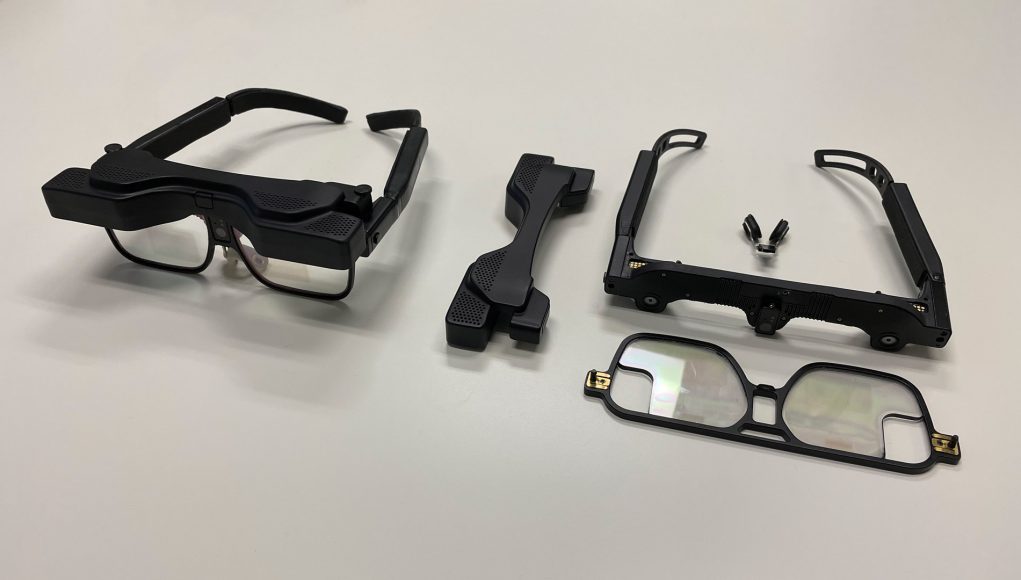Hands-on with DigiLens Design v1
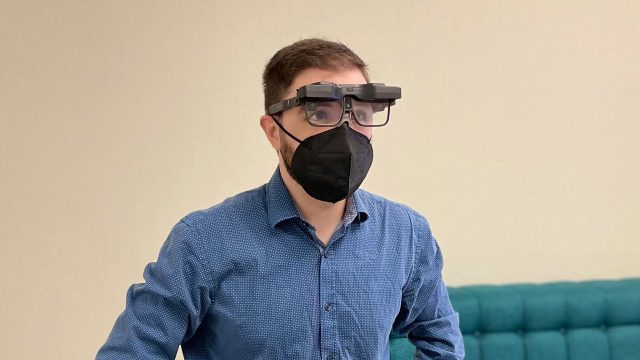
After the initial demo I got to check out the Design v1 itself which is surprisingly small considering it’s fully standalone. While you can plug in an external battery to extend the life, everything is built into the glasses, including the Snapdragon XR2 processor, sensors, memory, etc.
Compared to something like HoloLens 2 or Magic Leap, which are far bulkier, the Design v1 is quite impressive for a reference headset which the company expects will shrink further as productization happens and modularity concessions are no longer necessary. Unlike many of the bulky bird-bath optical approaches out there that will never be mistaken for mere glasses, with Design v1, DigiLens is demonstrating that its waveguides can be the basis for a truly glasses-sized AR device.
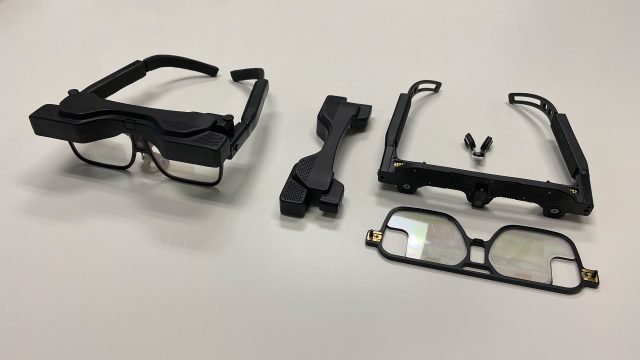
Granted, there’s still a good deal of ergonomics to work out. As I donned the Design v1, they were front-heavy and didn’t want to stay on my nose too readily. But at this stage, that’s all part of the idea behind a modular reference design—companies will be able to experiment and swap out parts to iterate until they have something they can bring to market.
Peering through the optics themselves, I saw the impressively wide field-of-view (50° diagonal) with full color right off the bat. While 50° still doesn’t feel like quite enough for fully immersive AR, it’s starting to approach to realm of practical usability compared to some first-gen AR headsets which were closer to 30° diagonally.
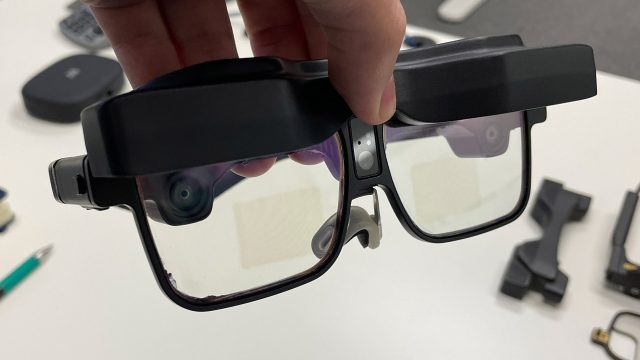
And while the Design v1 is largely a hardware development kit, the company has whipped up a basic gaze-based software interface with a handful of demos showcasing a range of use-cases. One demo played a 3D movie while another showed a remote support use-case where a remote observer could see ‘through my eyes’ (via the front-mounted camera) in order to guide me through any kind of procedure. At the same time that the remote observer could see my view, I could see a view of them via their webcam.
There was also a demo showcasing basic 6DOF tracking. Floating before me I saw a small representation of the Solar system with the Sun at the middle and some other bodies floating around it. I could walk around the Sun model to see it from all angles. Compared to productized XR devices, the 6DOF tracking wasn’t very precise and the content didn’t feel particularly locked to the world around me. However, it’s built on the same computer-vision based inside-out tracking approach that we’ve seen successfully deployed in many other finished products; I imagine this is a matter of properly optimizing the tracking software more than a limitation of the hardware.
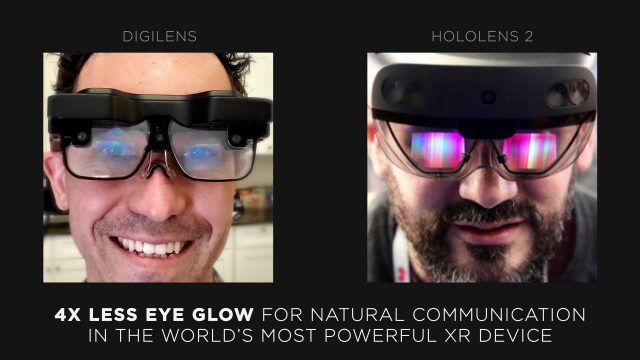
Another advantage DigiLens touts over the competition is less eye-glow than similar devices—eye-glow being how much the displays light up and block an outside observer from seeing your eyes. The company claims it has four times less eyeglow than HoloLens 2.
– – — – –
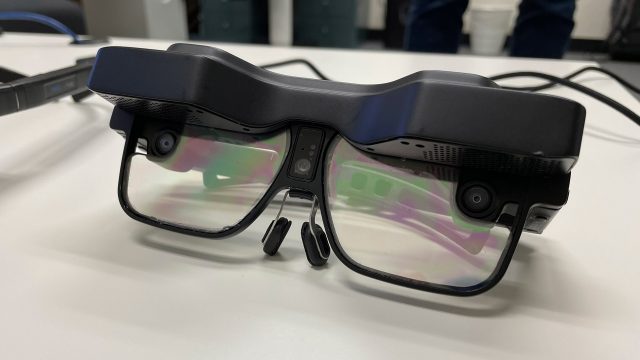
DigiLens says the Design v1 will become available to select partners at the end of June. It remains to be seen if the company will succeed in accelerating the consumerization of AR glasses, or just how long that might take, but Design v1 makes for a pretty compelling hardware demo for any companies hoping to be early movers in the space.[/vc_column_text][/vc_column][/vc_row]

